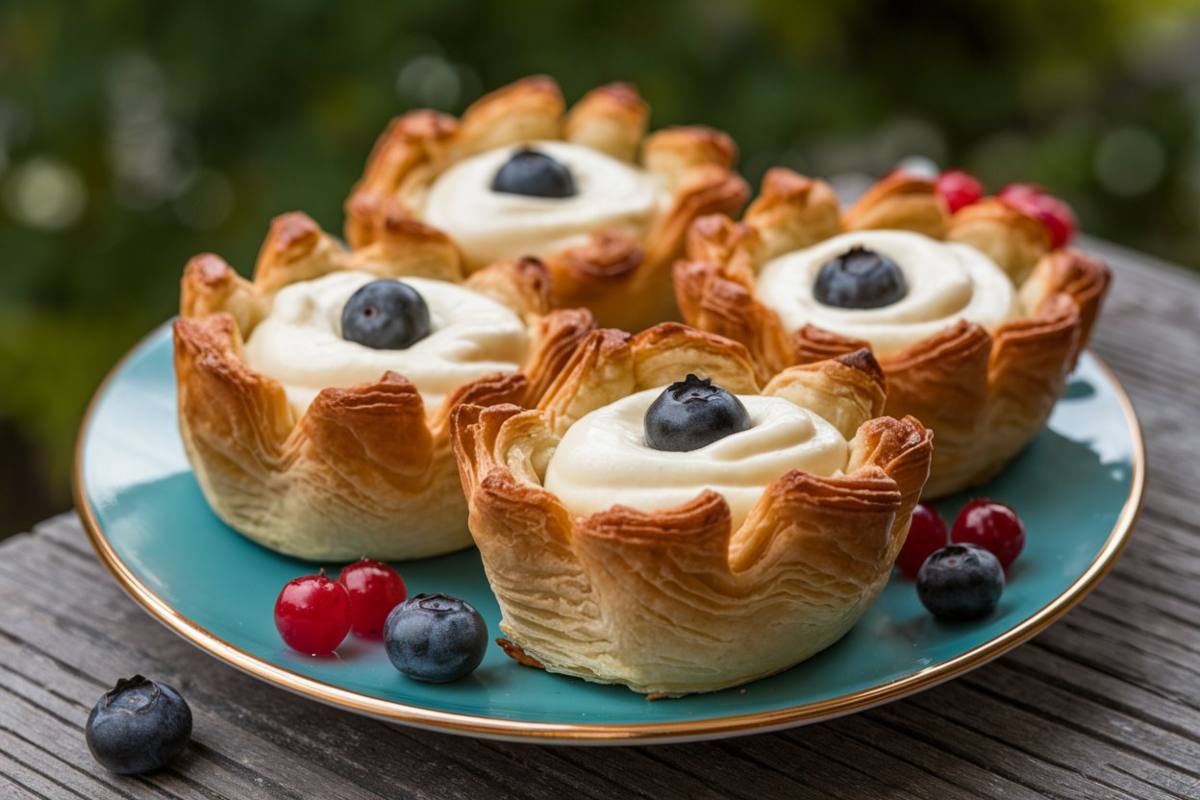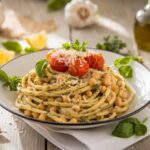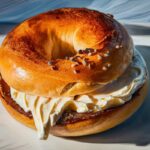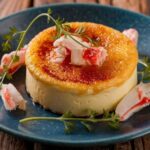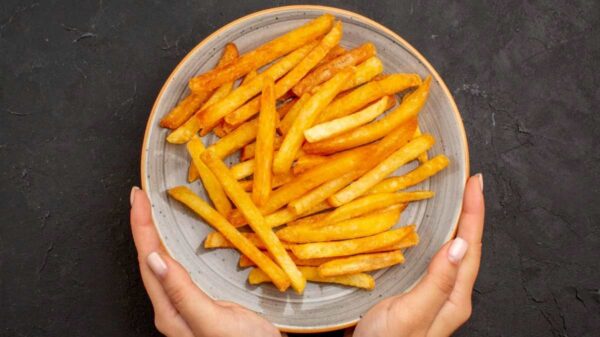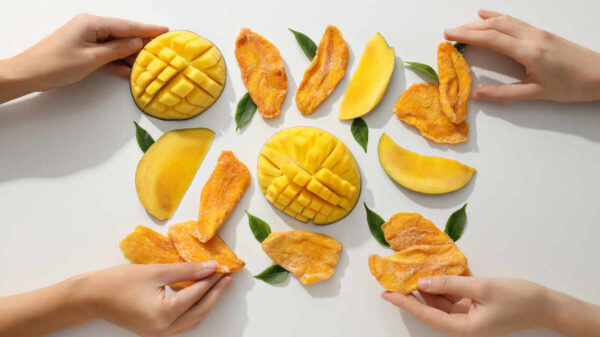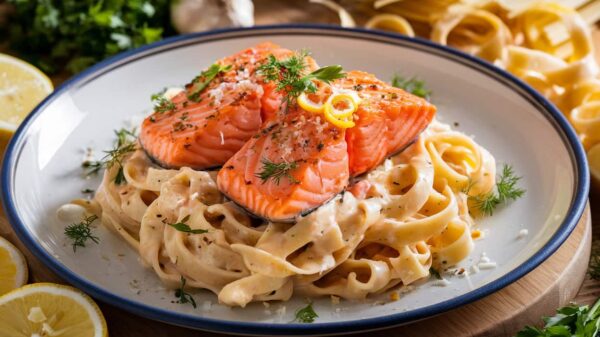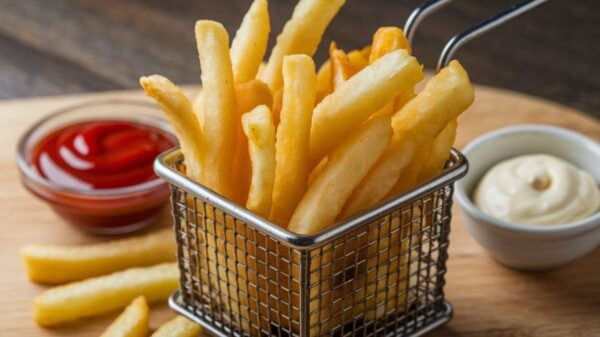Puff pastry shells are versatile and elegant components in both sweet and savoury dishes. Their flaky, airy texture and buttery flavour make them a favourite choice for a wide range of culinary creations. This guide delves into the intricacies of puff pastry shells, covering everything from their history and preparation to creative uses and recipes.
History of Puff Pastry
Puff pastry, also known as pâte feuilletée, has a rich history that dates back to the 17th century. Its origins are often attributed to the French chef Sylvain Claudius, who is said to have developed the technique while working in the kitchen of King Louis XIV. The process of making puff pastry involves creating a dough that is layered with butter and folded repeatedly to create a light, flaky texture.
Traditionally, the puff pastry was a labour-intensive process requiring meticulous folding and rolling. However, modern conveniences have made it easier to achieve the same results, with pre-made puff pastry now widely available in supermarkets.
Types OF Puff Pastry
Classic Puff Pastry
Classic puff pastry, also known as pâte feuilletée, is renowned for its intricate, layered structure. The preparation involves layering butter between sheets of dough, which are then repeatedly folded and rolled out. This process, known as lamination, creates numerous thin layers that puff up during baking. The result is a pastry with a light, airy texture and a delicate, crisp crunch. Classic puff pastry is used in a variety of dishes, from elegant pastries and tarts to savoury appetizers and pies. Its traditional preparation requires time and precision, making it a staple for professional bakers and those looking for a high-quality result.
Rough Puff Pastry
Rough puff pastry is a quicker and more straightforward version of the classic puff pastry. Instead of meticulously folding and rolling layers of butter into the dough, rough puff pastry involves a coarser method where chunks of butter are mixed into the flour. The dough is then folded and rolled out a few times, but less extensively than in classic puff pastry. The result is a pastry with a slightly less refined texture but still light and flaky. Rough puff pastry is ideal for home bakers who want the taste and texture of puff pastry without the extensive preparation time.
Quick Puff Pastry
Quick puff pastry simplifies the process even further by reducing the number of layers and folds. This type of puff pastry often combines the butter and flour more thoroughly and requires fewer turns and folds compared to classic and rough puff pastries. While it lacks some of the delicate flakiness of traditional puff pastry, quick puff pastry offers a faster preparation time. It is suitable for casual baking or when time is limited. It’s a great choice for simple recipes that still require a light, buttery pastry base.
Invert Puff Pastry
Invert puff pastry, also known as inverse puff pastry, involves a reversed method where the butter is enclosed within the dough rather than the dough being wrapped around the butter. In this technique, the dough is rolled out, and then butter is added, followed by more rolling and folding. This method creates a denser pastry with a slightly different texture compared to classic puff pastry. Invert puff pastry can be used in various baked goods, though it may achieve a different level of flakiness than the traditional method. It is often used in recipes where a slightly more substantial texture is desired.
Understanding Puff Pastry Shells
Puff pastry shells are made from the same dough used to create puff pastry, but they are shaped and baked in a specific way to form a hollow shell. These shells are perfect for filling with a variety of sweet or savoury ingredients. The process of making puff pastry shells involves several key steps.
To start, the dough is prepared by layering butter between sheets of dough and folding it multiple times. This process creates thin layers of dough separated by butter, which puffs up when baked. The next step involves shaping the shells. The dough is rolled out and cut into desired shapes, such as circles or more elaborate forms, using moulds. Some recipes suggest using a large circle of dough and cutting out smaller circles to create a layered effect.
Baking the shaped dough requires careful attention. The shells are baked at a high temperature to ensure they puff up properly. It is important to monitor the shells closely to avoid overbaking or burning. Once baked, the shells should be allowed to cool before being filled with any ingredients. This prevents the filling from melting or becoming too soggy.
Ingredients for Puff Pastry Shells
To prepare puff pastry shells, you will need the following ingredients:
- Puff Pastry Dough: This can be store-bought or homemade. The dough should be kept cold to ensure a flaky texture.
- Flour: For dusting the work surface to avoid sticking while rolling out the dough.
- Egg Wash: Made by thrashing one egg with a tablespoon of water, used to give the shells a golden, shiny finish.
- Salt and Pepper: Optional for seasoning savoury shells.
Techniques for Perfect Puff Pastry Shells
Mastering the technique of making puff pastry shells requires precision and attention to detail. Here are some essential methods to ensure your shells turn out perfectly:
- Chilling the Dough: Keeping the dough cold is crucial for achieving a flaky texture. The butter should remain solid, which helps create the layers. Chill the dough in the refrigerator for at least 30 minutes before rolling it out.
- Rolling the Dough: Roll out the dough on a lightly floured surface to avoid sticking. Aim for a richness of about 1/8 inch. If the dough becomes too soft or sticky, return it to the refrigerator to chill before continuing.
- Cutting the Shapes: Use a sharp cutter or knife to cut the dough into the wanted shapes. For uniform shells, use a round cutter or mould. For more intricate shapes, you can use specialized moulds or freehand designs.
- Egg Wash Application: Brush the tops of the dough shapes with egg wash to give them a golden, shiny finish. The egg wash also helps the dough brown evenly during baking.
- Baking: Bake the shells in a preheated oven at a high temperature, typically around 375°F (190°C). This ensures that the dough puffs up properly. Avoid opening the oven door Often, as this can cause the shells to collapse.
- Cooling: Allow the baked shells to cool completely on a wire rack before filling. This prevents the filling from becoming too soggy and maintains the crispness of the pastry.
Preparing Puff Pastry Shells
To begin preparing puff pastry shells, first preheat your oven to 375°F (190°C) and line a baking sheet with parchment paper to prevent sticking. On a surface dusted a little bit, roll out the puff pastry dough to about 1/8-inch thickness. If you are using store-bought dough, it may already be rolled out to the appropriate thickness.
Cut out circles of dough use round cutter or a knife. For a more intricate shape, you can use a shell mould or create free-form shapes. Place the cut-out dough circles on the ready baking sheet, comb the tops with egg wash to achieve a golden, shiny finish, and, if desired, season with salt and pepper for savoury shells.
Bake the dough in the preheated oven for 12 to 15 minutes or until the shells are puffed and golden brown. Keep an eye on them to ensure they do not burn. Once baked, allow the shells to cool on a wire rack before filling.
Creative Uses for Puff Pastry Shells
Puff pastry shells can be used in a variety of dishes, both sweet and savoury. For sweet applications, consider filling baked puff pastry shells with a mixture of pastry cream and fresh fruits like berries, kiwi, or mango. A glaze can be added for extra shine. Another idea is to pipe chocolate mousse or ganache into the shells for a rich treat, garnishing with powdered sugar or chocolate shavings. For a custard-filled option, use vanilla custard or crème pâtissière and sprinkle with nutmeg or cinnamon.
In savory applications, puff pastry shells can be filled with sautéed mushrooms, garlic, and herbs to create delightful appetizers. Another option is to use the shells as a base for mini chicken pot pies, filled with a creamy chicken & vegetable mixture and topped with cheese. Spinach and feta bites can be made by combining spinach, feta cheese, and herbs. Additionally, smoked salmon & cream cheese can be used to create an elegant hors d’oeuvre.
Nutrition Facts of Puff Pastry Shells
Puff pastry shells, while delicious, are typically high in calories, fat, and sodium. Here are the approximate nutrition facts for one puff pastry shell (based on a standard size of about 2 inches in diameter):
- Calories: 150-200 kcal
- Total Fat: 10-14 grams
- Saturated Fat: 6-8 grams
- Cholesterol: 30-50 mg
- Sodium: 150-200 mg
- Total Carbohydrates: 15-20 grams
- Dietary Fiber: 0-1 gram
- Sugars: 1-5 grams
- Protein: 2-3 grams
These values can vary based on the brand & specific recipe used. Puff pastry is rich in butter, which contributes to its high fat and calorie content. For those monitoring their dietary intake, it is important to consume puff pastry shells in moderation and balance them with other nutrient-dense foods.
Serving Puff Pastry Shells
Puff pastry shells are highly versatile and can be served in numerous ways. For a sophisticated appetizer, serve savoury-filled shells with crisp white wine or champagne. They can also be plated with a light salad featuring ingredients such as mixed greens, cherry tomatoes, and a citrus vinaigrette to balance the richness of the pastry.
For a dessert presentation, puff pastry shells can be dusted with powdered sugar & served with fresh fruit or a dollop of whipped cream. To create an elegant dessert platter, pair the filled shells with small scoops of sorbet or gelato. When serving puff pastry shells as part of a larger meal or gathering, consider arranging them on a tiered serving stand or platter to showcase their delicate appearance.
Tips for Perfect Puff Pastry Shells
For the best results, keep your puff pastry dough and butter as cold as possible. This helps create the flaky texture. Handle the dough as little as possible to avoid it becoming tough. The less you handle it, the flakier the final product will be. Bake at a high temperature to make sure the pastry puffs up properly, as lower temperatures may result in dense or flat shells. If the shells become soggy after filling, consider baking them for a few extra minutes or using a thicker filling that won’t cause excess moisture.
Troubleshooting Common Issues
If your shells are not puffing up, it might be due to a low oven temperature or overworked dough. Ensure your oven is appropriately preheated and avoid overworking the dough. In case the shells become soggy after filling, bake them for a few more minutes or use a thicker filling. To prevent burnt tops, keep an eye on the shells during baking and cover them with aluminium foil if they brown too quickly.
Storing Puff Pastry Shells
Puff pastry shells are best enjoyed fresh, but they can be stored for later use. Store cooled puff pastry shells in an airtight container at room temperature for up to two days. For longer storage, you can freeze the shells. To freeze, place the cooled shells in a one layer in a freezer-safe bag or container. They can be frozen for up to one month. To reheat, place the shells in a preheated oven at 350°F (175°C) for about 5 to 10 minutes until warmed through and crispy.
Conclusion
Puff pastry shells are versatile and elegant additions to sweet and savoury dishes. With their flaky texture and buttery flavour, they serve as an outstanding foundation for a variety of fillings. By following the tips and techniques described in this guide, you can master the art of making puff pastry shells and elevate your culinary creations. Whether you’re preparing a sophisticated dessert or a savoury appetizer, puff pastry shells are sure to impress and delight.

